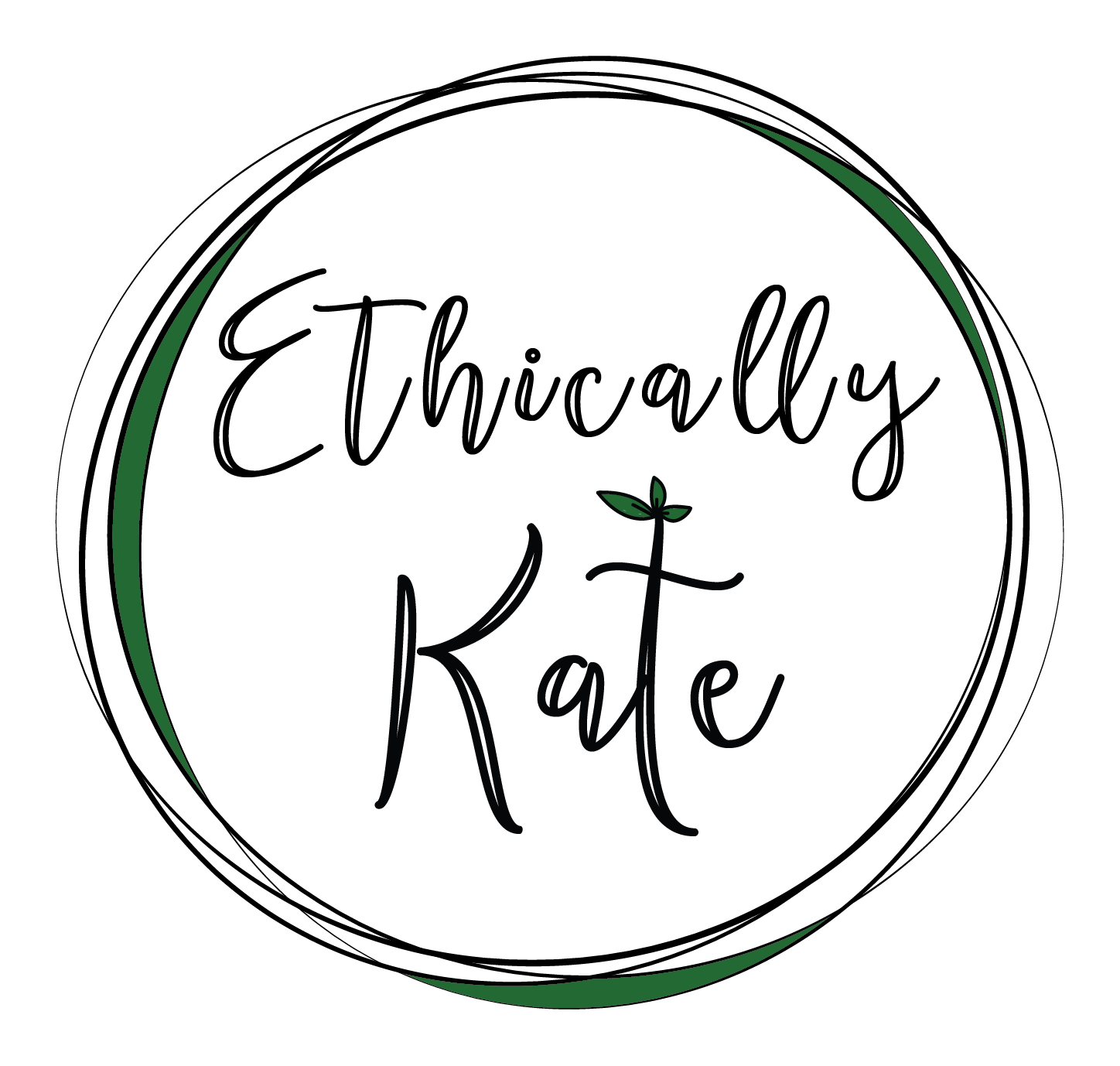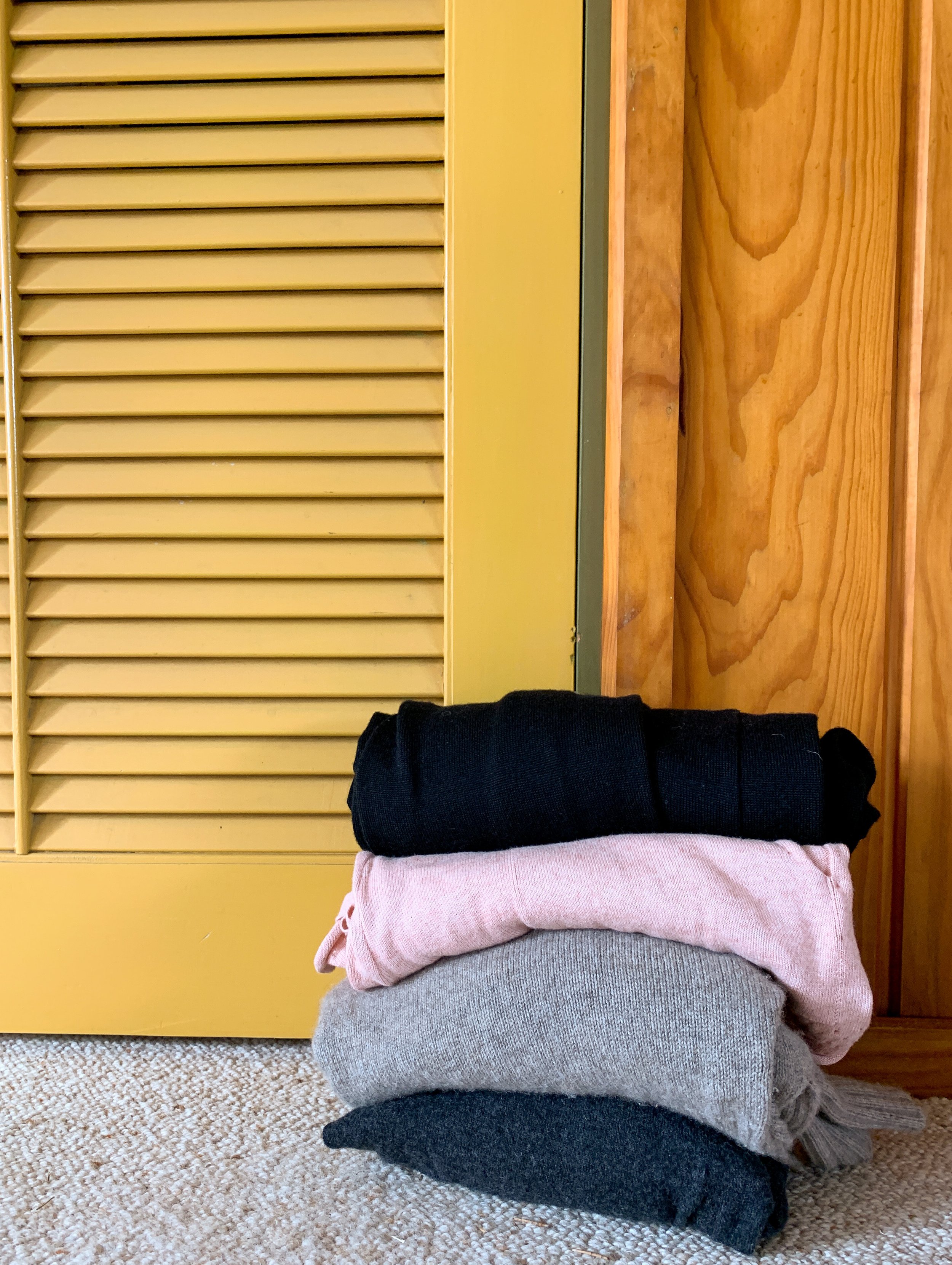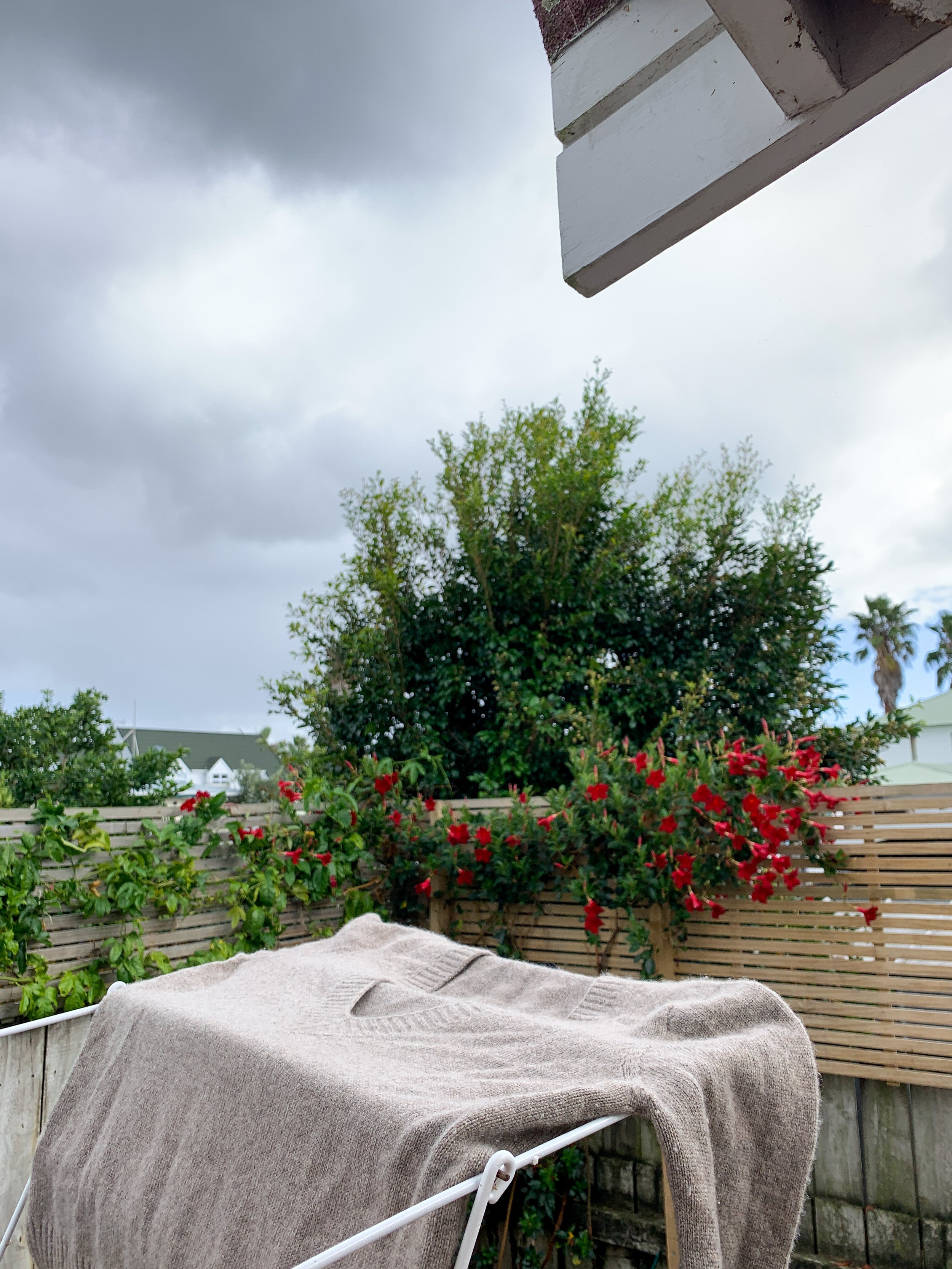How To Care For Wool Clothes
If you walked into my house you would quickly notice my favourite fibre. My carpet, chairs, clothes, blankets, duvet inner, and even my dog is made from it.
I love wool.
When done right, wool is an incredible sustainable fibre that outshines its synthetic alternatives. Wool is naturally odour, stain, flame and wrinkle resistant, has a lifetime of more than 50% longer than cotton, requires less washing and is incredibly beautiful to wear!
Woollen garments are a wardrobe staple for most of us and as we enter the cooler months it’s important we care for our winter woolies with the respect they deserve.
Some of my favourite woollen garments are from Standard Issue, a local company who lead the way in New Zealand sustainable fashion. To help you understand how sustainable wool is produced, I will share in detail about Standard Issue’s wool and then explain the key steps for caring for your wool clothes like the lovely friends they are.
Standard Issue's Wool
Not all wool is made equal. Sheep can be mistreated, unnecessary chemicals can be added, and you can end up with a fibre that’s not only the cause of planet and animal devastation, but also itchy and low quality. That’s why I love Standard Issue’s way of producing wool. Their merino is low impact, ethically produced, high quality and unbelievably soft. It’s ZQ merino - this means a few things:
The merino is traceable back to the farm it is grown.
The sheep are treated fairly and held to five freedoms: freedom from thirst, freedom to live naturally, freedom from discomfort, free from distress, and free from disease. The ZQ standard ensures all sheep live happy lives and are treated with the best care.
The farm where Standard Issue’s ZQ merino comes from has a Land Environmental Plan to manage the environmental impacts relative to their individual property. All ZQ farms have this.
The ZQ standard promotes safe and healthy workplaces with fair wages.
Traditionally, there was no way to find out where the wool from your garments was from because farmers would sell their wool at auction with no knowledge of where it went. All ZQ fibres, including Standard Issue’s ZQ merino, can be traced back to the individual farms where the fibre began. There are also regular third party audits to ensure all of the above is consistently adhered to.
All Standard Issue merino is dyed using OEKO-TEX® standard 100 certified dyes, ensuring the safest chemical-free quality and strictly regulated waste water management. What makes the yarn especially unique is the lack of chlorine involved in processing the merino fibre into a yarn. Most wool is processed with chlorine; Standard Issue’s merino is not. Because of these sustainable dye and treatment methods, Standard Issue’s ZQ merino garments can be composted at the end of their life.
“… getting back to the past; the way we once did things.” - Emma, Standard Issue founder and CEO.
Storing Wool Clothing
Storing wool garments requires slightly more consideration than your usual clothes. Moths love to burrow themselves into woollen garments, which can result in tiny holes. When storing your wool clothing consider a few options:
Place a cotton ball with a few drops of lavender, mint, or eucalyptus oil on it by your wool garments.
Store them in an airtight container during the warmer months when you may not use your woollen garments as often.
Don’t store your garments until they are completely clean.
For everyday storage, consider an open tray/draw (like mine above) for your wool garments to nestle and enjoy the airflow.
General Care
I am a big spot washing advocate. I have knitwear I’ve owned for years that I still haven’t washed! To lengthen your woollen garment’s lifespan and keep it looking incredible, spot wash instead of a full hand wash. Apply water and a tiny amount of laundry soap to the mark. Leave for 5 minutes maximum and rinse out thoroughly.
Woollen garments are prone to pilling, some more than others. Although Standard Issue’s ZQ merino is infamously known for its lack of piling, piling is likely to happen at some stage to any woollen garment. Use a cashmere comb to remove or get inventive like I do and use a safety razor to remove the piling (this works well but takes a bit of time).
I’m fairly onto it when it comes to washing my garments before storing them away, but every few months on laundry day I make a conscious effort to air out my knits. I will drape them in airy spaces around my home and leave them in low sunlight when appropriate (being conscious not to leave them in direct sunlight otherwise the colours can fade).
Caring & Repairing Clothes
Although wool lasts a long time, no garment is invincible. Repairing holes or loose threads is best to do as soon as you see them. The earlier you get to it, the more easy it is to fix! Learn repairing skills through local classes or explore YouTube. If the repair goes beyond your ability, employ a local seamstress or a friend to fix it for you.
Standard Issue’s garments are some of the highest quality wool clothing I have ever owned. I have yet to need their repair scheme, but their Care for Life program is ready when I need it. Standard Issue renew knits through mending, reusing by passing on, and repurposing by giving the fibres a new life. If you have a Standard Issue garment in need of a repair, simply send it back for a fix!
Washing & Drying
The amazing thing about wool is that is does not need washing nearly as much as other garments. Simply airing your woollen garment in low sunlight and/or wind or even lying it out on your bed before storing can get rid of any odours.
If you do need to wash your knits, avoid dry cleaning and machine washing; opt for a gentle hand wash. Dissolve environmentally friendly laundry soap in water and gently massage the garment throughout the tub. Ensure the water is cool, otherwise the wool garments may shrink. Rinse the garment in fresh, clean water and ensure all soap suds have been washed out.
Avoid twisting or wringing your garment when drying. Instead of a harsh wring out, gently squeeze the water from your wool clothing. Roll the knit in a clean towel to absorb any excess water if needed. Lie the garment on a flat surface in an airy space, preferably out of direct sunshine to avoid fading.
Some days I go from being wrapped in my woollen duvet cover to putting on my woollen socks while walking along my wool carpet to pat my wool dog, wearing my wool sustainable fashion garments from Standard Issue… I am a proud wool advocate and I hope by now you are too! Wool is wonderfully self reliant and one of the most adaptive and well wearing garments in your wardrobe, but with these steps above we can ensure our woollen garments stay looking fresh and can be past down for many generations.
As a rule, I only work with brands I love, use, and can whole heartedly back. This is a sponsored blog (I can't pay my electricity bill with free products), but 100% my own words, photos, and opinion.



